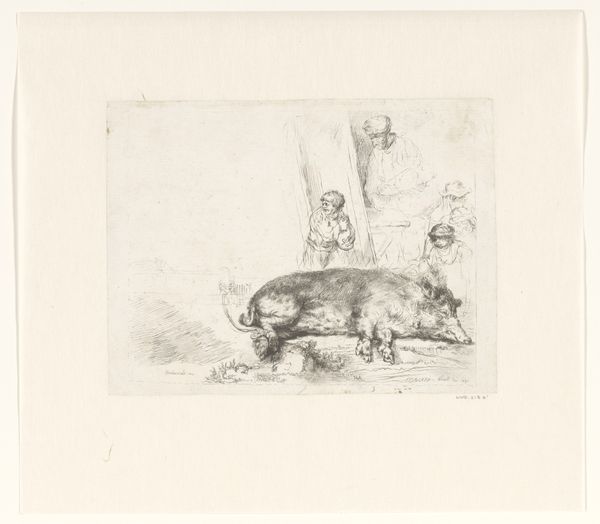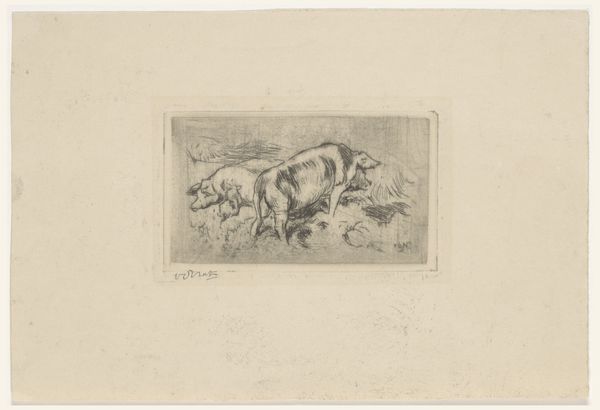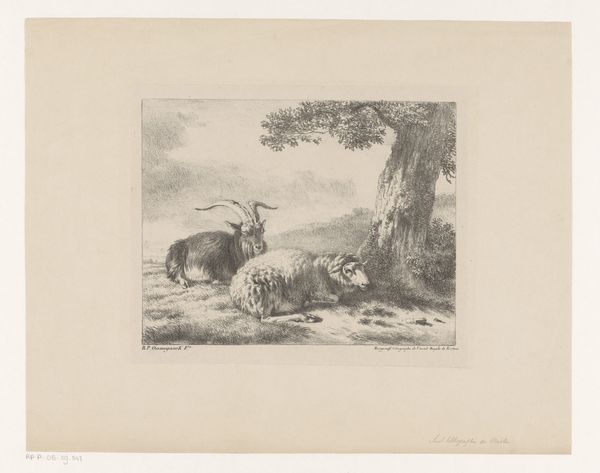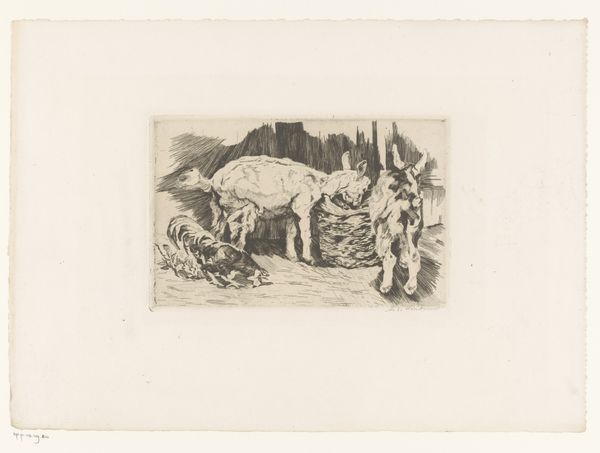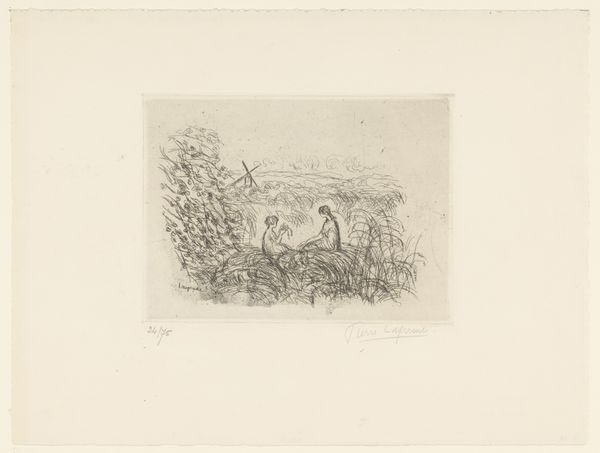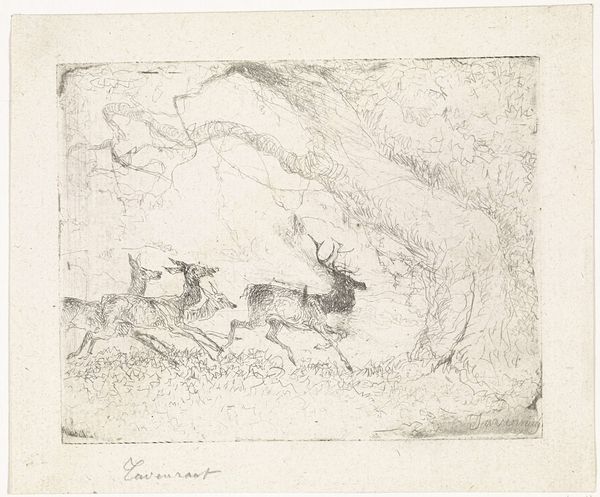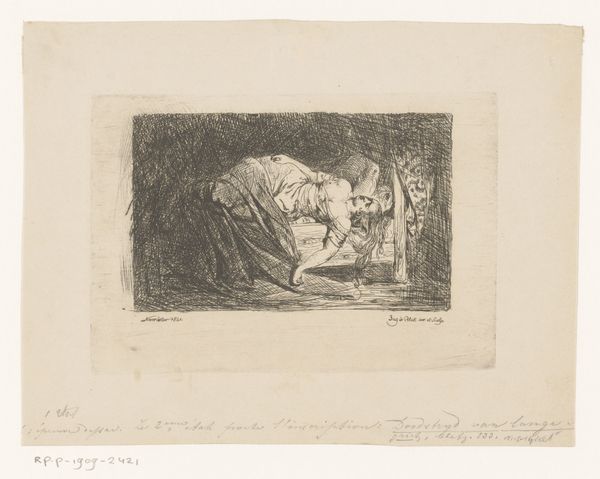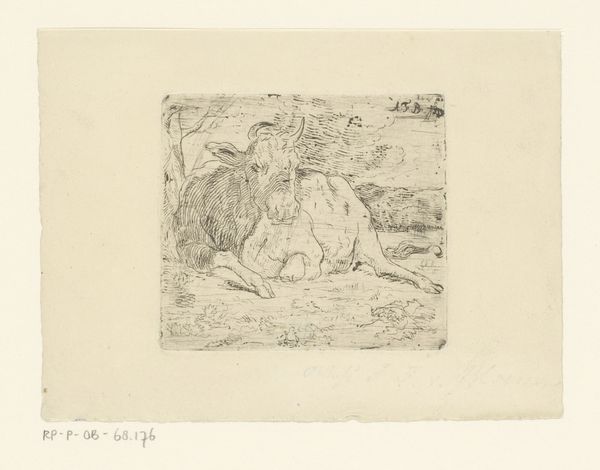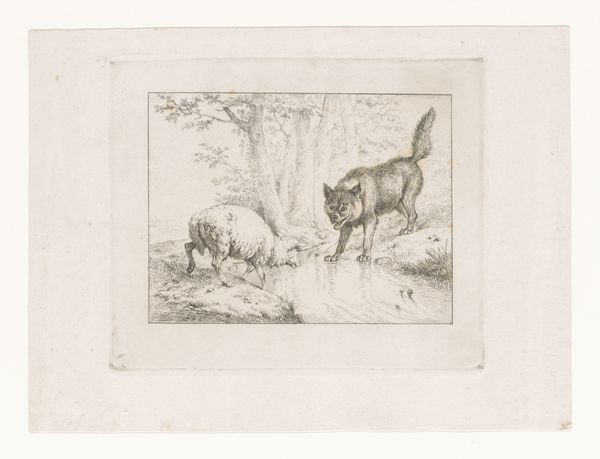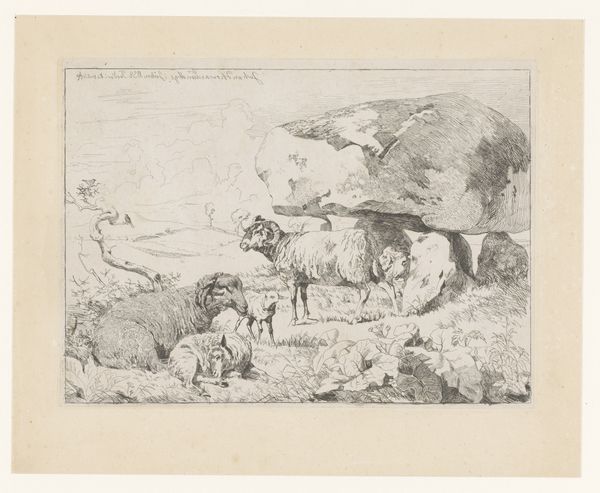
drawing, print, etching
#
drawing
#
narrative-art
# print
#
etching
#
genre-painting
#
realism
Dimensions: height 143 mm, width 184 mm
Copyright: Rijks Museum: Open Domain
Curator: Richard Byron’s etching, "The Hog," dating back to the latter half of the 18th century, depicts a scene seemingly plucked straight from daily life, currently residing here at the Rijksmuseum. Editor: It strikes me immediately as both humble and deeply visceral. The textures seem so palpable despite the medium; I can almost smell the earthiness emanating from this print. Curator: Absolutely, and the social context of 18th-century Dutch life is critical here. Etchings like these provided glimpses into the everyday for a wider audience. "Genre-painting" as its called allowed access to narratives not centered around wealthy patrons, it democratized representation. What social class would be purchasing or making these types of artwork? Editor: Given the material, likely from emerging mercantile class? Perhaps they're displaying this is their homes, as signs of increasing capital through this kind of brutal labor? What of that background crowd; it hints at communal labor, a collective event, and by highlighting such acts through the work, we emphasize labor practices—we examine where this labor intersects with social identities, no? Curator: I agree, those faces peering from the doorway imply an intersection of viewers and actors in this very setting, raising questions around social class, voyeurism, spectatorship. How are these depictions inherently gendered, too? Why highlight domestic labor through violence; for example? Editor: Certainly, and beyond its social implications, consider Byron’s technique. The deliberate use of etching enhances a rather bleak view in its details to create a stark atmosphere— it calls into sharp focus both craft and its embedded socioeconomic values. It almost reads as a production line. The process itself underscores a shift toward industrialized consumption—and in turn the image reinforces our engagement to the subject? Curator: That industrial shift definitely had a tangible impact. I’m drawn to how these artworks can encourage a dialogue. Thinking about the history surrounding this genre and connecting it to questions around inequality is one that must be continued to confront issues today. Editor: And by dissecting not just its surface appearance but also how materiality shapes cultural capital. That's where our deeper appreciation takes root.
Comments
No comments
Be the first to comment and join the conversation on the ultimate creative platform.
